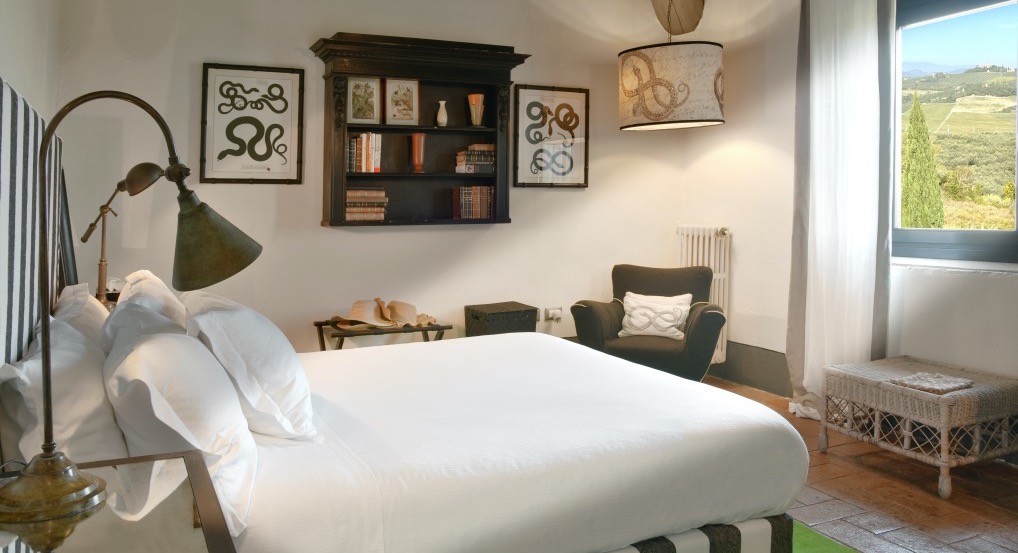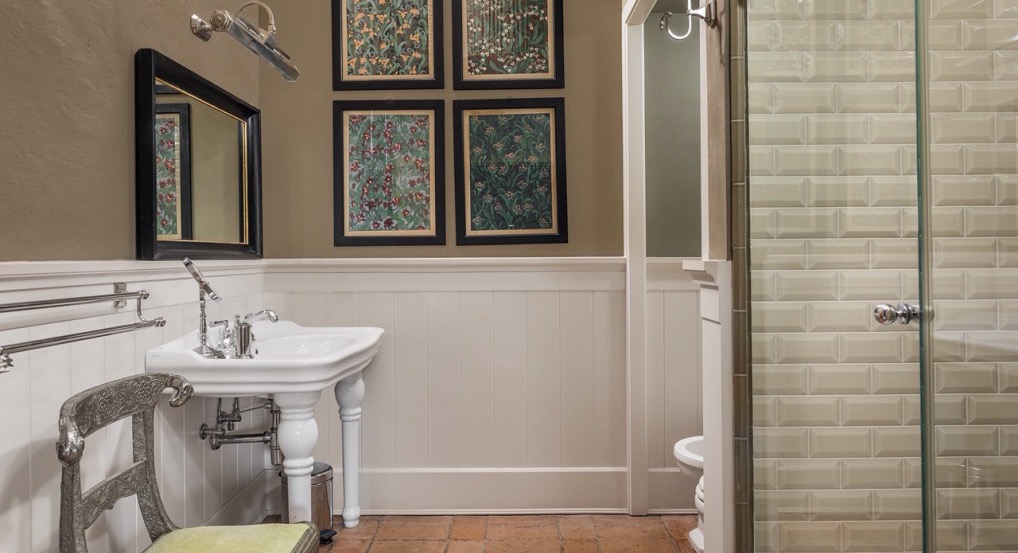• Montespertoli: the closest village to the villa, it has shops, cafés and restaurants. Its weekly street market, held in the main square Piazza del Popolo, is abundant in local products and an authentic Tuscan atmosphere.
• Wine Tasting: Right in the surroundings there are some excellent vineyards including Castello Sonnino and Castello di Poppiano. Many more vineyards are found throughout the Chianti region.
• Chianti Villages & Historic Sites: In addition to wine tasting, the Chianti area has many delightful villages, each of them with a history of its own. Let us simply mention lesser known gems such as the romanesque church of Sant’Appiano, the Basilica of Impruneta, the fortified castle of Monteriggioni and the roofless romanesque abbey of San Galgano. And don’t miss the Saturday market in the small town of Greve.
• Olive Oil Tasting: There are several venues for olive oil tasting nearby, such as the Villa le Corti where you can arrange a guided visit of the olive mill and the historical “orciaia” where olive oil is stored.
• Cheese Tasting: Very close to the villa is the Corzano e Paterno farm where you can sample or buy fresh cheese. It can also be reached on foot along a beautiful road.
• Truffle Hunting and Lunch: If you are visiting from October to April you may be at the right time for one of Tuscany’s most unique activities. Traveling through the Val d’Egola guided by an expert and trained dogs, you’ll go in search of this prized tuber. The experience concludes with a gourmet lunch made with your finds!
• Badia a Passignano with its Abbey dated 395 A.C. and where one of the most famous Chiantis, the “Badia a Passignano Chianti Classico Riserva D.O.C.G.”by the Antinory family is produced. Wine tour in the cellars of the ancient Abbey can be organised.
• Certaldo Alto: Located only 30 minutes from the villa is this traditional hilltop Tuscan town. It has plenty of local curiosities and historic buildings which tell the story of the town. You generally park in the main square of the lower town of Certaldo and take the cable car to reach the upper medieval town.
• Radda in Chianti: A one-hour drive away is this lovely medieval town encircled by defensive walls. Its narrow streets, lined with stone buildings and towers and it also boasts beautiful views.
• Impruneta: A typical Tuscan town with tidy streets and honey-colored stone buildings bunched together,has a lovely square, 3 restaurants, and two good spots for gelato. Impruneta is famous for terracotta and ceramic production.
• The village of Montalcino, home to the famous Brunello di Montalcino stands hilltop covered almost entirely with vineyards and at its centre signature examples of Medieval architecture: the Palazzo dei Priori and the wonderful Rocca fortress, built circa XIV century. Nine kilometres to the south of Montalcino, in a timeless rural landscape surrounded by yet more Brunello vineyards, can be found the Abbey of Sant’Antimo.
• San Gimignano: this small walled medieval hill town in the province of Siena is a regional treasure. It is mainly famous for its medieval architecture, especially its towers, which may be seen from several kilometers outside the town. The town also is known for the white wine, Vernaccia di San Gimignano, grown in the area.
• Florence: The city lies on the Arno River and is known for its history and its importance in the Middle Ages and in the Renaissance, especially for its art and architecture. A centre of medieval European trade and finance, the city is often considered the birthplace of the Italian Renaissance; in fact, it has been called the Athens of the Middle Ages. It was long under the de facto rule of the Medici family. From 1865 to 1870 the city was also the capital of the Kingdom of Italy. The historic centre of Florence continues to attract millions of tourists each year and was declared a World Heritage Site by UNESCO in 1982.
• Siena: The Sienese have no doubt, their town is the most beautiful in all of Tuscany, if not all of Italy. Siena has remained a Gothic city. Renaissance, one of the major influences in Florence, hardly affected the urban development of Siena. The city unfolds around the main shell-shaped square called “Il Campo.” Twice a year the famous horse race known as the “Palio” takes place here. The narrow streets are lined with old shops and small cafes, while churches and museums are real treasures of the fourteenth century.
• The seashore: the sandy beaches along the coast of Versilia at turn of the century Viareggio and fashionable Forte dei Marmi with their trendy bars, designer shopping and some of the best seafood restaurants in Italy. There are also pristine beaches and great hiking opportunities in the Maremma Nature Park.




































